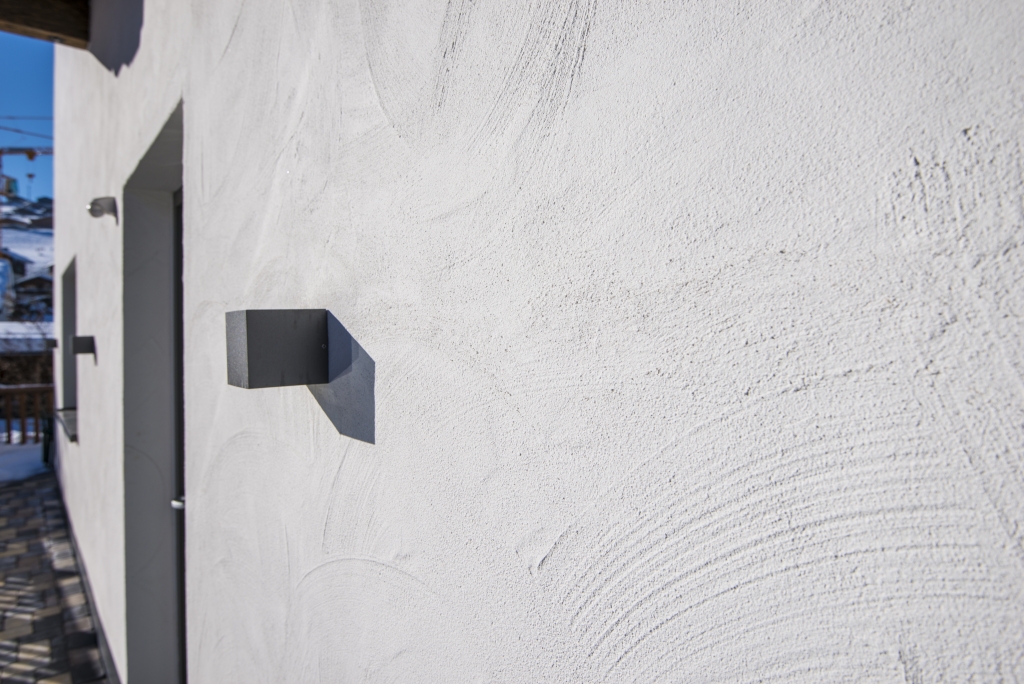James Arnold, Field Engineer at global building materials manufacturer Baumit, offers a guide to painting render in winter.
We asked James a series of frequently asked questions about rendering in cold temperatures, such as ‘Can you render in cold weather?’ and ‘What is the minimum temperature for rendering?’. Read on to hear his thoughts and expert guidance.
Can you render in winter? If so, what are the challenges?
Baumit supplies its products to more than 35 countries globally, including a considerable presence in Russia which experiences significantly colder winters than the UK. The biggest obstacle our applicators have to overcome is drying times, which vary throughout the year. This is particularly pertinent when there is higher humidity on cold damp days, as this prolongs drying times. In some cases, the temperature for rendering can become too low, as our products contain a volume of water that will be affected by freezing temperatures. However, the UK's temperate climate offers an optimal rendering temperature and means such occurrences are rare. Personally, the biggest challenge I've seen during the winter months is workers suffering cold hands and feet on site.

Do cold rendering weather conditions have any benefits for application and finish?
Ultimately, cold weather means that the render may not dry rapidly enough. When this happens the render may retain moisture for too long and become susceptible to damage from the trapped moisture. This is why it is essential to protect render from frost when it is drying.
Which product works best when applying render in cold weather?
Thin coat render systems dry more quickly than conventional render such as sand and cement. This is due to the finished system being thinner on the wall..
How can you protect render from frost?
You can easily protect render from frost damage or freezing with a tin hat (tin roof) placed over the full project or simply having some protection around the scaffold in the form of debris netting. Therefore, applicators will ensure the scaffolder's design allows this.
In harsher conditions experienced across parts of Europe, applicators will also look to have space heaters behind the debris netting to create a healthy drying environment. This works as long as the heat is not directed straight at the rendered surface.
What preparation should be given to external walls in lieu of cold temperatures for rendering?
Keeping the walls dry is key to successfully applying render in cold weather. It's also a good idea if the walls can be covered to keep them as dry as possible and protect render from frost as problems can occur if water gets behind the render which can potentially freeze.
Often, applicators will check the walls are not going to freeze the render whilst it's drying. The best way to test this is with a small amount of water, which should be brushed onto the wall prior to the application. If the water freezes on the wall it is time to go home for the day, unfortunately. In conditions as cold as this, the answer to the question, ‘Can rendering be done in winter?’ is ‘no’, we’re afraid.
Can you render in the winter with Baumit products?
Baumit has a couple of products that are winter-specific.
Baumit SpeedTop is a ready-to-use additive for Baumit SilikonTop and Baumit GranoporTop. It provides accelerated setting and enhanced durability on the facade with high humidity and low temperatures, as well as in fog.
Baumit SpeedTop can be added in temperatures of <+ 1C and <15C and with a relative humidity of <95% to help with drying times.
Baumit can also offer StarContact Speed which is a mineral adhesive and reinforcing mortar for manual and mechanical application. StarContact Speed is fast-setting, frost-resistant, water-repellent, and permeable. What’s more, like all Baumit basecoats, it is easy to apply. This gives the user an advantage when applying render in cold weather conditions.
Find out more about our range of renders here.

